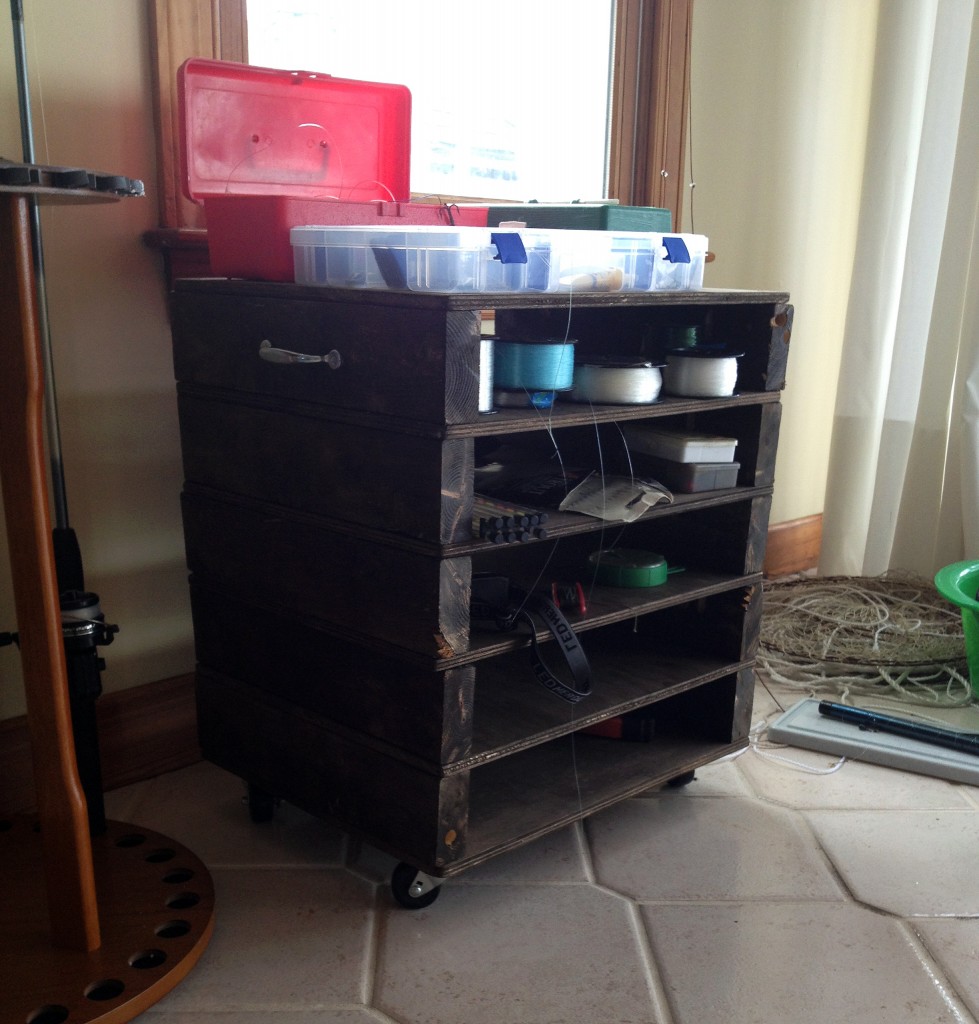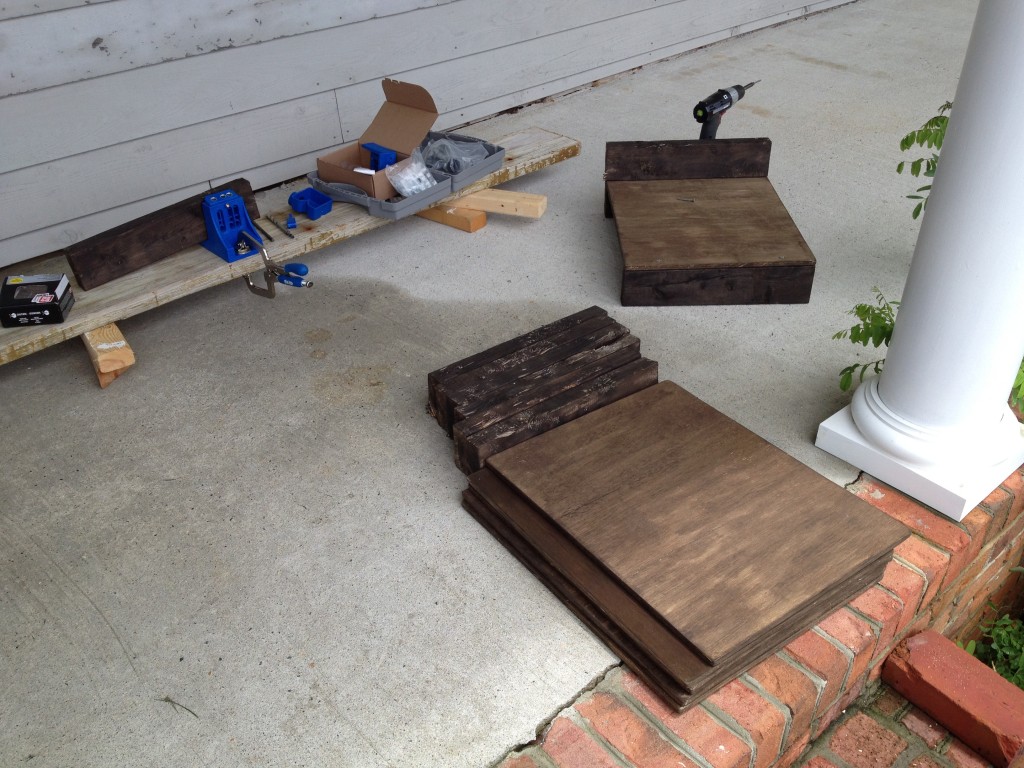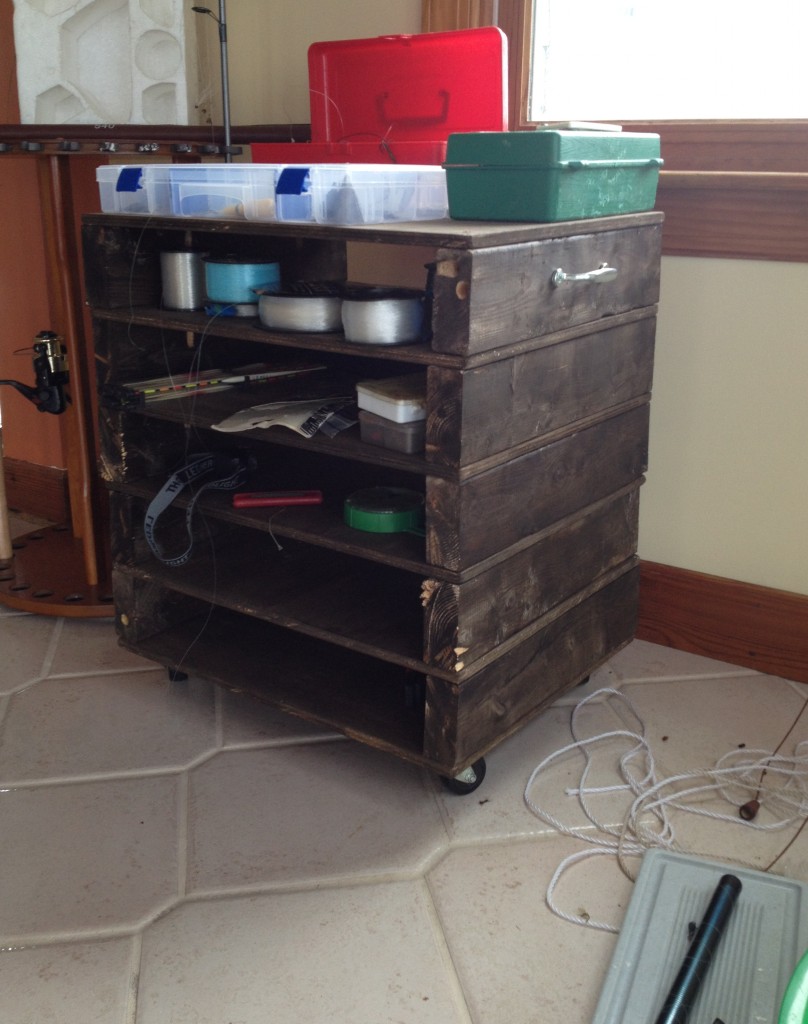DIY: Rolling Fishing Caddy
Ever since we moved in to our place by the water, the Hubbie has had his fishing goodies spread all over the table. Not that I mind his passions - I'm so happy he has a hobby to keep his attention and let him de-stress. But I'd really like to have my table back. :-)
I also was looking for a simple project to try out my new Kreg Jig. I'd never used it before and this seemed like just the project to learn on - and if I messed up, no harm no foul.
I found this cool rolling magazine stand on Pinterest and mulled over how I could do this to accommodate the fishing tackle. After picking through the pole barn for remnants that weren't drilled through by the carpenter bees, I found enough supplies to carry it out.

Cut List:
10 16" 2x4s 6 16"x24" pieces of plywood
Tools & Supplies
Table saw Orbital sander Kreg Jig Framing triangle Drill Wood screws (about 60) Dark Minwax stain 4 locking casters 2 cart handles

Steps
- Measure and cut each piece
- Sand all rough edges, round sharp corners, and make as smooth as possible
- Stain each piece.
I was going for a rough look, not refined. The more finished the look, the more time you'll want to spend on this step to give even coverage. Also be aware that the stain will look different on different kinds of wood. You may need to add several coats.
- Start with the bottom and start building each layer.
You'll notice that it becomes impossible to add a layer by drilling straight in from the top. Enter the Kreg Jig. I drilled the angle holes for each layer as I went, and screwed the layers together. Use a framing triangle to make sure each layer is square.
- Add the casters to the bottom (optional).
- Add the handles on each site (optional).
I may end up adding a piece of peg board on the back to hang things, but for right now, he's finding it handy to be able to access each shelf from either side.
You can see the holes at the end of the 2x4s where the carpenter bees drilled their prefect holes through the wood - it adds a little something to the piece.

